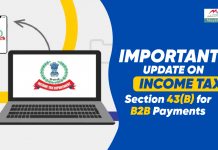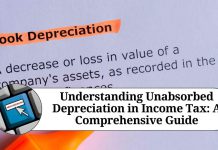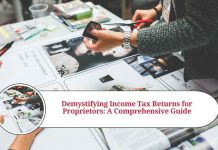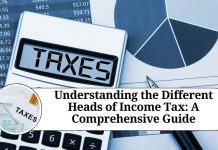Section 80C of the Income Tax Act is one of the most popular tax-saving provisions in India. It allows taxpayers to reduce their taxable income by investing in specified tax-saving instruments. In this blog, we will discuss the various aspects of Section 80C and how you can take advantage of it to reduce your tax liability.
What is Section 80C?
Section 80C is a provision in the Income Tax Act that allows taxpayers to claim deductions on their taxable income by investing in specified tax-saving instruments. The maximum deduction under this section is Rs. 1.5 lakh per annum.
What are the Tax-saving Instruments covered under Section 80C?
There are several tax-saving instruments covered under Section 80C. Some of the most popular ones are:
- Employee Provident Fund (EPF)
- Public Provident Fund (PPF)
- National Pension System (NPS)
- Equity-Linked Saving Scheme (ELSS)
- Tax-saving Fixed Deposits (FDs)
- National Savings Certificate (NSC)
- Senior Citizen Savings Scheme (SCSS)
- Sukanya Samriddhi Yojana (SSY)
Each of these instruments has its own eligibility criteria, lock-in periods, and other terms and conditions. It is important to understand the features of each instrument before investing.
What is the Maximum Deduction allowed under Section 80C?
The maximum deduction allowed under Section 80C is Rs. 1.5 lakh per annum. This means that if you invest in tax-saving instruments up to Rs. 1.5 lakh in a financial year, you can claim the entire amount as a deduction from your taxable income.
For example, if your taxable income is Rs. 8 lakh and you invest Rs. 1.5 lakh in tax-saving instruments, your taxable income will be reduced to Rs. 6.5 lakh, and you will pay tax only on that amount.
What are the Benefits of Investing under Section 80C?
There are several benefits of investing in tax-saving instruments under Section 80C. Some of them are:
Tax savings: Investing in tax-saving instruments under Section 80C allows you to reduce your taxable income and hence, your tax liability.
Long-term savings: Many of the tax-saving instruments under Section 80C have long lock-in periods, which encourages long-term savings.
Diversification: Investing in a mix of tax-saving instruments under Section 80C allows you to diversify your portfolio and reduce your risk.
Fixed returns: Some tax-saving instruments like PPF and FDs offer fixed returns, which can be attractive for risk-averse investors.
Retirement planning: Tax-saving instruments like NPS and SCSS are ideal for retirement planning as they provide regular income post-retirement.
What are the Limitations of Section 80C?
While Section 80C offers several benefits, there are some limitations that you should be aware of:
Lock-in periods: Many of the tax-saving instruments under Section 80C have long lock-in periods, which means that you cannot withdraw your money before a certain period.
Limited deduction: The maximum deduction allowed under Section 80C is Rs. 1.5 lakh per annum, which may not be sufficient for some taxpayers.
Limited choice: The tax-saving instruments covered under Section 80C are limited, which may not suit the investment needs of all taxpayers.
Tips for Maximizing Your Tax Savings under Section 80C
Here are some tips to help you maximize your tax savings under Section 80C:
- Start early: It’s never too early to start investing in tax-saving instruments. The earlier you start, the more time you have to build your investment portfolio and maximize your tax savings.
- Plan your investments: Before investing, assess your financial goals, risk appetite, and investment horizon. This will help you choose the right mix of tax-saving instruments that suit your investment needs.
- Diversify your portfolio: Investing in a mix of tax-saving instruments can help you diversify your portfolio and reduce your risk.
- Consider ELSS: Equity-Linked Saving Scheme (ELSS) is a tax-saving mutual fund that offers the potential for higher returns than other tax-saving instruments like PPF and FDs. However, it comes with higher risk.
- Invest in NPS: National Pension System (NPS) is a retirement-focused tax-saving instrument that offers tax benefits and regular income post-retirement. It’s a good option for those who want to plan for their retirement.
- Use online tax calculators: Online tax calculators can help you estimate your tax liability and plan your investments accordingly.
- Make use of the carry-forward provision: If you are unable to exhaust the maximum deduction of Rs. 1.5 lakh in a financial year, you can carry forward the balance deduction to the next financial year and claim it then.
Common Misconceptions about Section 80C
There are several misconceptions about Section 80C that taxpayers should be aware of. Here are some common ones:
- Only salaried employees can claim deduction under Section 80C: This is not true. Any individual, whether salaried or self-employed, can claim deduction under Section 80C.
- You can claim deduction for any amount invested in tax-saving instruments: This is not true. The maximum deduction allowed under Section 80C is Rs. 1.5 lakh per annum. Investing more than this amount will not result in additional tax savings.
- You can claim deduction for the entire investment amount: This is not true. The deduction under Section 80C is limited to the amount invested in tax-saving instruments. For example, if you invest Rs. 2 lakh in PPF, you can claim deduction only up to Rs. 1.5 lakh under Section 80C.
- The deduction under Section 80C is in addition to the standard deduction: This is not true. The deduction under Section 80C is part of the overall deduction available under the Income Tax Act. The standard deduction is a separate deduction.
- The deduction under Section 80C is available only for investments made during the financial year: This is not true. You can claim deduction under Section 80C for investments made up to the due date of filing the tax return.
It is important to have a clear understanding of the provisions of Section 80C and avoid these common misconceptions to avoid any tax-related issues in the future.
Conclusion
Section 80C is a valuable provision in the Income Tax Act that allows taxpayers to save tax while investing in tax-saving instruments. By understanding the features of each instrument and choosing the right mix of investments, you can make the most of this provision and reduce your tax liability.
Read more useful content:
Frequently Asked Questions (FAQs)
- What is Section 80C of the Income Tax Act?
Section 80C is a provision in the Income Tax Act that allows individuals to claim tax deductions up to Rs. 1.5 lakh per year on investments made in specified tax-saving instruments.
2. What are the tax-saving instruments eligible under Section 80C?
Some of the tax-saving instruments eligible under Section 80C include Public Provident Fund (PPF), Equity-Linked Savings Scheme (ELSS), National Pension System (NPS), Unit Linked Insurance Plans (ULIPs), and tax-saving fixed deposits (FDs).
3. Can I claim a deduction for the entire investment amount under Section 80C?
No, the deduction under Section 80C is limited to Rs. 1.5 lakh per year. Investing more than this amount will not result in additional tax savings.
4. Can I claim deduction under Section 80C for investments made in the name of my spouse or children?
No, you can only claim deduction for investments made in your own name, subject to the maximum limit of Rs. 1.5 lakh per year.
5. Is the deduction under Section 80C available only to salaried employees?
No, any individual, whether salaried or self-employed, can claim deduction under Section 80C.
6. What is the due date for making investments under Section 80C?
The due date for making investments under Section 80C is March 31st of every financial year.
7. Can I claim deduction under Section 80C for investments made after the due date of filing the tax return?
No, you can only claim deduction for investments made up to the due date of filing the tax return.
8. Can I claim deduction under Section 80C if I have already exhausted the maximum limit in a financial year?
No, once you have exhausted the maximum limit of Rs. 1.5 lakh in a financial year, you cannot claim any additional deduction under Section 80C.
9. Is the deduction under Section 80C in addition to the standard deduction?
No, the deduction under Section 80C is part of the overall deduction available under the Income Tax Act. The standard deduction is a separate deduction.
10. Can I carry forward the balance deduction under Section 80C to the next financial year?
No, you cannot carry forward the balance deduction under Section 80C to the next financial year. You need to claim the deduction in the same financial year in which the investments were made.

































